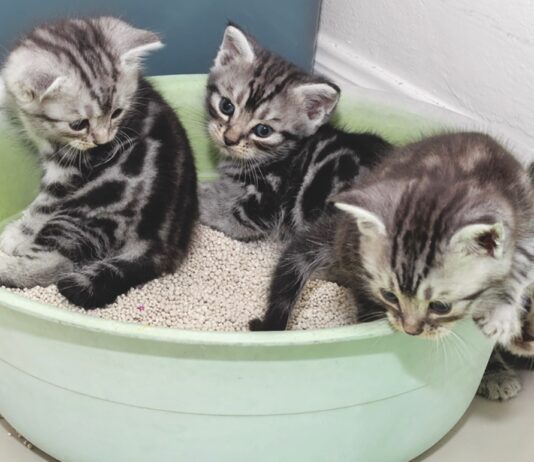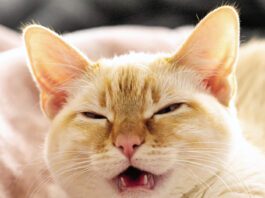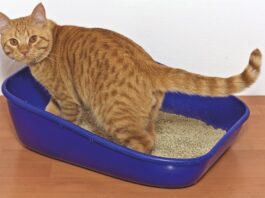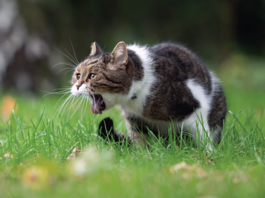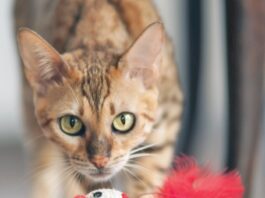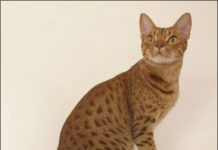Ask Elizabeth: August 2011
In the U.S. — as in most of the Northern Hemisphere — rabies is a disease of wildlife which occasionally spills over to infect domestic animals and humans. Infection of our pet cats and dogs occurs when unvaccinated animals come into contact with infected wild animals; vaccination provides an important protection to our pets and makes an effective barrier between wildlife rabies and humans. All warm-blooded animals are susceptible to rabies; however, the virus in a particular geographic area is usually a distinct genetic variant that has adapted to preferentially infect a single dominant reservoir host.
Ask Elizabeth: July 2011
Dear Elizabeth: I have four cats in my household and one of them, Tabitha, has a tendency to chew and eat plastic. Ive caught her chewing on plastic bags that Ive carried in from the store, as well as items in the basement that are wrapped in plastic. I worry that she could choke to death or hurt herself somehow. Why does she do this? One of my other cats is aggressive and chases her. Tabitha is afraid and will not fight back; could her plastic obsession be stress-related? Any ideas of what I can do?
Ask Elizabeth: June 2011
I have had whiskers all my life, but I really took them for granted until recently. Whiskers just seemed like big, fat hairs to me! So what are they, exactly? Well, all of a cats fur grows from hair follicles in the epidermal layer of the skin. Whiskers are specially modified (big, fat) hairs that grow from very large follicles in specific locations. Of course, the most prominent whiskers are those that grow on the upper lips of the muzzle.
Ask Elizabeth: May 2011
Chronic renal failure is a progressive, irreversible disease that slowly leads to impaired kidney function and serious consequences. The kidneys contain nephrons which are responsible for filtering the blood, removing waste products and regulating electrolytes. In CRF, the nephrons die, and waste products begin to accumulate in the body. Electrolytes may become imbalanced in CRF, leading to problems such as hypertension, seizures, muscle weakness and heart problems.
Ask Elizabeth: April 2011
I adopted a cat from a local animal shelter three years ago. She is a beautiful brown tabby girl who loves to help when Im working at my desk. The trouble is that she sneezes green goobers all over my paperwork. When I brought her home she had a runny nose and goopy eyes with a lot of sneezing - a classic cat cold according to my veterinarian. A week of antibiotics helped decrease the wet sneezes, but Tabitha has never really recovered from that early cold.
Ask Elizabeth: March 2011
My mother-in-law (ninety-one years old!) is coming to stay with us for a few weeks. Were busy picking up throw rugs and preparing a downstairs room for her to stay in to help avoid falls. My two cats, Napsack and Mel, know that somethings up and have been helping with the preparations - especially those that involve cardboard boxes!
Ask Elizabeth: February 2011
When I brought her home she had a runny nose and goopy eyes with a lot of sneezing - a classic cat cold according to my veterinarian. A week of antibiotics helped decrease the wet sneezes, but Tabitha has never really recovered from that early cold. Three years have gone by and she still sneezes thick goobers nearly every day. Although she seems happy, is active and eats well, her constant snuffling, congested breathing and spewing green goobers breaks my heart - and also has me frustrated. My veterinarian has done everything she can think of, from antibiotics for weeks on end to medication to help with Tabithas immune system. Everything seems to help … for a while.
Ask Elizabeth: January 2011
Our dog came home from the kennel last week with a bad case of kennel cough. Hes on antibiotics and hes gradually getting better. However, now our two cats are also coughing. Is it possible that they have kennel cough, even though they did not go to the kennel and they are cats? I never heard of cats getting kennel cough. If they have kennel cough, should they be treated with antibiotics, as well?
Ask Elizabeth: December 2010
When Dr. Lucas came into the room I was too embarrassed to admit that Id been peeking at Lilys record so instead of asking her, Im asking you, Elizabeth: What does that description mean? In particular Im curious about the mackerel tabby part; Ive always called Lily a tiger cat, which I think is another name for tabby … but mackerel sounds fishy!
Ask Elizabeth: November 2010
Dear Elizabeth, I cant believe Im writing this, but we have bed bugs in our home. We recently vacationed in Europe, and evidently brought home some unwanted hitchhikers. I thought only low rent motels were a source of bed bugs, but we stayed at beautiful, exclusive hotels, and now I find myself wondering what went wrong.Weve hired a licensed exterminator and will move out of our home when the exterminator is using pesticides in the house, but Im concerned for our cats. Should we move them out too and, if so, is there any risk of the bed bugs hitching a ride on the cats?
Ask Elizabeth: October 2010
My main concern is that Buster, a fierce hunter of mice, will bring about an early demise to any small pets we bring home. Do you have any tips on keeping Guinea pigs (or other small creatures, since Im sure that, once we bring home one, others will follow) safe from cats in the home? And will these precious little beings be stressed, living in the home of a proud hunter? I wouldnt want them to live an unhappy life!
Ask Elizabeth: September 2010
Im very confused about feeding my cat. Feather is a healthy 14-year-old Siamese companion. Over the years Ive offered Feather a variety of products from different pet food manufacturers - everything from Tender Vittles to dry grocery store brands to fancy little pop-top cans. Whatever I scoop into her bowl, Feather will eat it.

